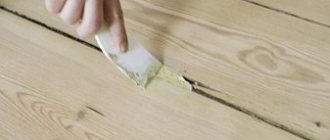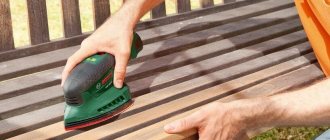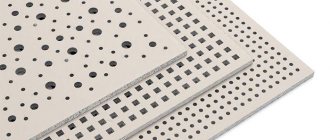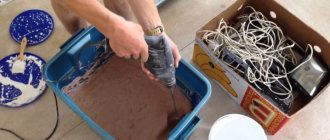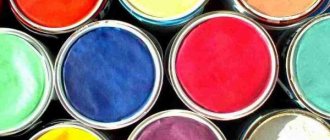Advantages of wax oil
The wax-based composition has a number of positive properties:
- It is easily and quickly applied to wooden objects;
- It contains only natural substances, so you don’t have to worry about safety and environmental friendliness;
- Items are easy to care for by removing dirt from the surface;
- Wax oil can be reapplied;
- You can create different shades to imitate antiquity;
- Treatment of parquet or floors prevents moisture from entering, preserving the material from destruction.
What is liquid wax
Each of us is familiar with the concept of regular wax, but what kind of car wax is it? This is a product from the field of auto chemicals, which is developed in order to create a protective coating on the paintwork of a car. It definitely has water-repellent properties. In addition, car wax should:
- prevent premature aging of the coating and its destruction;
- facilitate subsequent cleaning by manual and automatic means;
- speed up drying and increase its efficiency;
- and, most importantly, maintain the attractive appearance of the vehicle.
Regardless of which car wax is best suited to a particular brand of car, it must prevent the penetration of aggressive components under the surface of the coating. Even at first glance, it is easy to distinguish between a car body treated and untreated with this product. It is visually noticeable that the treated coating is shiny and shiny and has a smooth surface. You can also quickly recognize such coatings in wet weather. On wax, raindrops do not spread over the entire surface area. First they gather into balls, and then simply roll off the body.
Formation of droplets on the car body
If you neglect this procedure, road dirt and dust will eventually penetrate deeper and deeper under the paint surface and accumulate inside. You will have to visit car wash services more and more often to restore your car's visual appeal. Using wax, you can protect your car from these problems in a relatively short time and at low cost.
Cooking methods
For home use, you can use one of the options for making wax oil.
First way
You need to take 100 g of beeswax and 300 ml of jojoba oil. The wax can be finely grated, melted in a water bath and pour in the oil. The wax must be stirred constantly until it cools completely to prevent it from curdling.
This composition is good for treating children's furniture or wooden toys. You can store it without a refrigerator, but in the dark, for two years.
Second way
The mixture can be made from flax oil in a ratio of 1:4. For one tablespoon of wax you need four tablespoons of linseed oil. You should not add too much wax, as the composition will be viscous. The cooking technology is the same as in the first method.
This product can be colored using various additives. True, this oil takes a long time to dry. To speed up drying, you need to add a drier. Flaxseed oil with wax is stored in glass for 1 year.
Third way
Natural wax is mixed with drying oil 1:1. Everything is prepared exactly the same as in the first two methods. You can try this recipe: take two parts wax, one part oil and one part turpentine. As it hardens, this composition becomes very dense, resembling a paste in appearance. It is easy to apply, and after treatment the wood acquires the ability to repel water.
FAQ
Below we have answered questions regarding the choice of formulations with oil and wax, as well as the features of working with them. If you haven't found the answer to your questions, ask them in the comments!
Basic information about the compositions
First, let's look at the main points that you need to pay attention to when choosing a material.
1. How do you know which oil to buy?
The time has long passed when you had to choose among a couple of general-purpose compounds. Now everything is simple: on each can it is written what the material is specifically intended for. This is how you can find oils and waxes:
- for general purpose flooring;
- for parquet;
- for work surfaces;
- for countertops;
- for furniture;
- for garden furniture;
- for terraces;
- for facades;
- for baths and saunas...
…the list goes on for a long time. But what’s really important is that it’s become more difficult to make a wrong choice. And this is nice, especially if you are buying a product for the first time.
2. What should be included in quality oils and waxes?«]
Any such product should be based on oil: natural flaxseed, soybean, sunflower or drying oil, a mixture of vegetable oils - it doesn’t matter. The main thing is that they are included. Oils are responsible for the depth of impregnation, the creation of a hydrophobic layer, and the optical perception of wood texture. They emphasize the wood pattern and make it deeper.
In addition, the composition should contain hard waxes, for example, carnauba and candelilla. They give the coating wear resistance, prevent abrasion, and make it water resistant. Depending on the composition and ratio of ingredients, waxes determine the degree of glossiness of the coating. A related role is played by paraffins.
The oil polymerizes over time under the influence of light and atmospheric oxygen. If everything is left to chance, the coating will take a very long time to dry, and upon contact with the treated surface, a characteristic oily mark will remain on the hand. To speed up the polymerization reaction, driers must be included in the composition.
Dryers are catalysts for the hardening process of oils. These can be salts of calcium, cobalt, barium, manganese, lead, etc. They speed up drying, ensuring uniformity of the process over the entire surface.
To ensure the homogeneity of the oil-wax, a solvent is added to its composition. This role can be played by oil, water, or organic solvent. And here we come close to an important question...
3. What will this product smell like when applied?
The first impression of any solution consists of two things: appearance and smell. The cheap composition reveals itself already when you first open the can - the acrid smell of solvent rushes into your nose. If you apply it to a couple of square meters indoors, then after a few minutes your head will start spinning.
But the presence of an organic solvent does not always indicate a low quality product. If it is for outdoor use, then why not? For interior work, a LITTLE white spirit, dearomatized gasoline or other solvent is also often added. But its presence must be justified by the high content of dry residue or the technology of the work, for example, this is necessary for quick drying of the coating.
Ideally it should smell like oil and wax. Light and soft odor that disappears immediately after polymerization of the material.
4. How many layers do you need to apply to achieve the desired result?
There can be 2, 3, 4 or 5 layers. There can be as many of them as you like, especially for unprepared wood that absorbs oil like a sponge. The amount depends on the density of the wood and the desired effect. There are exceptions: single-layer compositions that form an impermeable film, and subsequent layers do not lead to any visible result.
In any case, regardless of the manufacturer’s recommendations, before working with an unfamiliar material, it is necessary to carry out test applications, thereby predicting the result.
5. How long does it take for the oil to dry?
A distinction is made between the drying time between layer-by-layer application and the final drying time. Applying the next layer may take from 2-4 hours to 2 days. It all depends on the composition of the applied solution, the temperature and humidity of the air at the work site.
Final drying with 100% strength may require from 2 days to 3 weeks. All these values must be indicated on the oil package.
6. How often should the coating be renewed?
Coatings with oil and wax compositions, like any other paintwork materials, do not last forever. They need to be updated from time to time. Usually this needs to be done once a year when it comes to work surfaces, as well as bases subject to increased abrasion: countertops, cutting boards.
Wooden floors, parquet, stairs, etc. will have to be updated at least once every 3 years. Certain types of compounds require less frequent renewal - up to 7 years. But this is about coatings that are not subject to mechanical stress: furniture facades, doors, windows, etc.
7. What is the consumption of such compounds?
The consumption for each material is different. It depends on the components and the proportions in which they are mixed. The composition can be found out from the technical characteristics, estimating how much it will cost to process 1 m² of surface and comparing the cost of proposals.
Product processing
You can impregnate wood with wax after preliminary preparation: cleaning it from dirt and dust, sanding the surface. The heated wax oil is applied to the object with a brush in a thin layer. Strokes are made quickly, otherwise distinguishable transition boundaries are formed. Hardened wax should be removed from the brush with a cloth to ensure even coverage. After impregnation with wax, the surface of the object can be further sanded with a clean cotton cloth. As a result, the item acquires a smooth and shiny appearance for a long time. The coating must be renewed twice a year.
Wood processing. Oil and wax
There are different methods for treating wood, but they have the same goal - to prevent rotting, mold, drying out, damage by insects, and also to give the surface a beautiful finished look. The use of special oils (drying oil) and beeswax allows you to preserve the structure of the material, gives it shine and strength, and increases its service life.
You can treat wood at minimal cost using linseed or hemp oil. Before starting work, it is necessary to clean the wood from dirt and dust, completely remove the previous coating, and sand the surface with fine-grain sandpaper. Experts recommend heating flaxseed oil in a water bath, but you can do without this procedure. Apply the oil either using a flute or rub it into the wood with sandpaper. It is important to follow the direction of the brush; apply oil only along the grain. The work is left for a day, after which the oil is applied again, the procedure is repeated until the desired result is achieved. Small items are immersed in oil for several days.
There are other treatments, such as coating the wood with a mixture of linseed oil and beeswax. All components are melted in a water bath, then applied to the surface with a brush or cloth. In order to give the wood a certain shade, a tint of a suitable color is added to the composition. This method has a significant drawback - very slow drying. You can speed up the process if you add a drier (sold in art stores) or purchase ready-made oil (driing oil), which contains polymerization accelerators and antifungal additives.
You can treat wood with only one wax. Modern industry offers colored, colorless, matte, semi-matte, glossy compositions that not only strengthen, but also favorably emphasize the texture of wood. To treat a large surface, it is necessary to heat the wax in a water bath (in this case it is applied with a wide brush). Cold wax is rubbed into the wood in a thin layer using a cloth, left for about a day, then the surface is waxed again. You can combine colorless and tinted wax, for example, treat the edges with a dark composition and the middle of the product with a transparent one. After the wax has dried, you need to polish the surface with a woolen cloth (felt).


